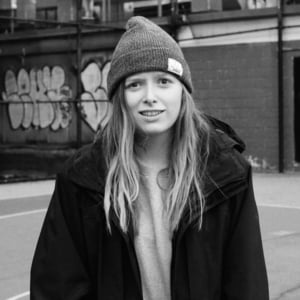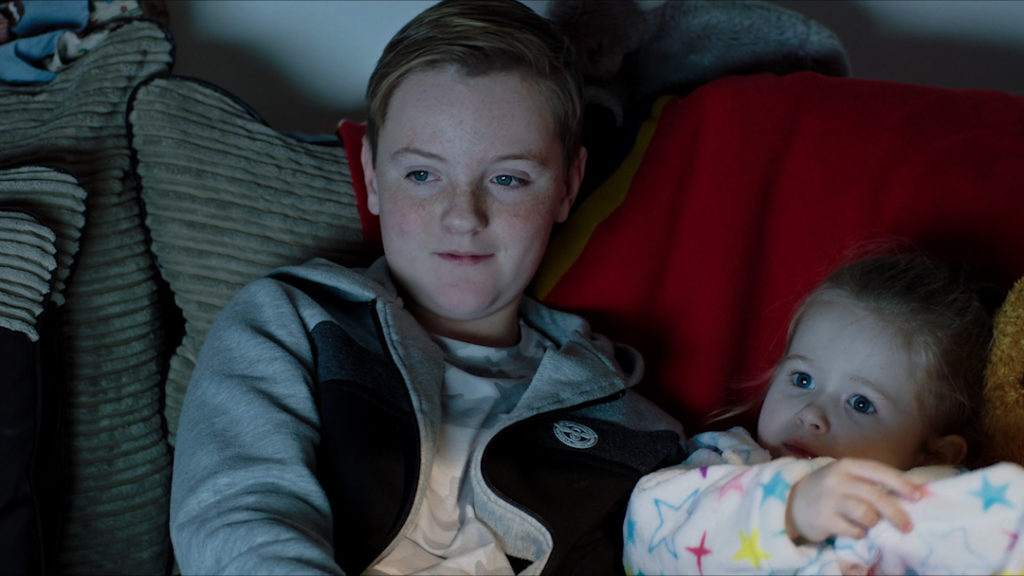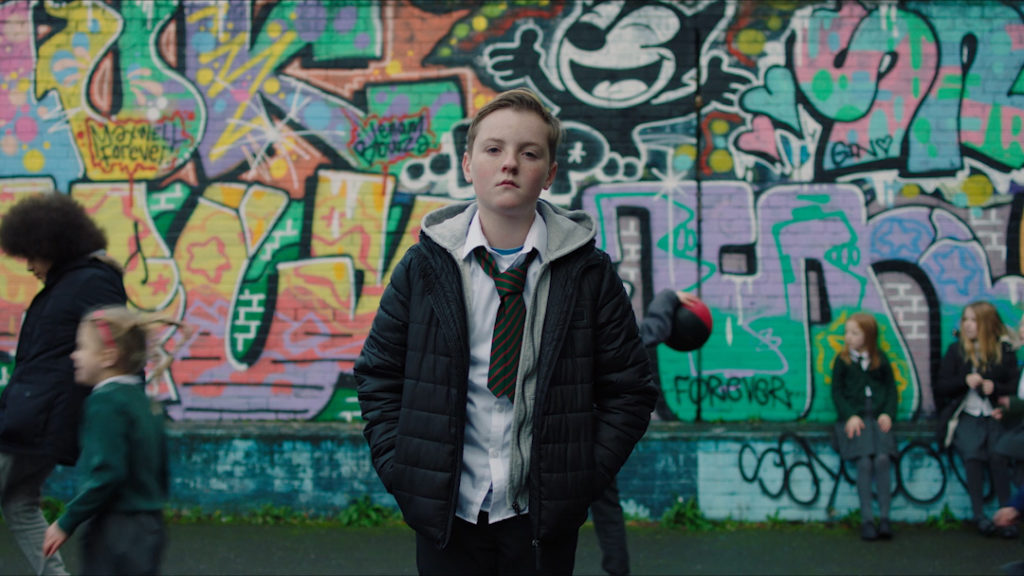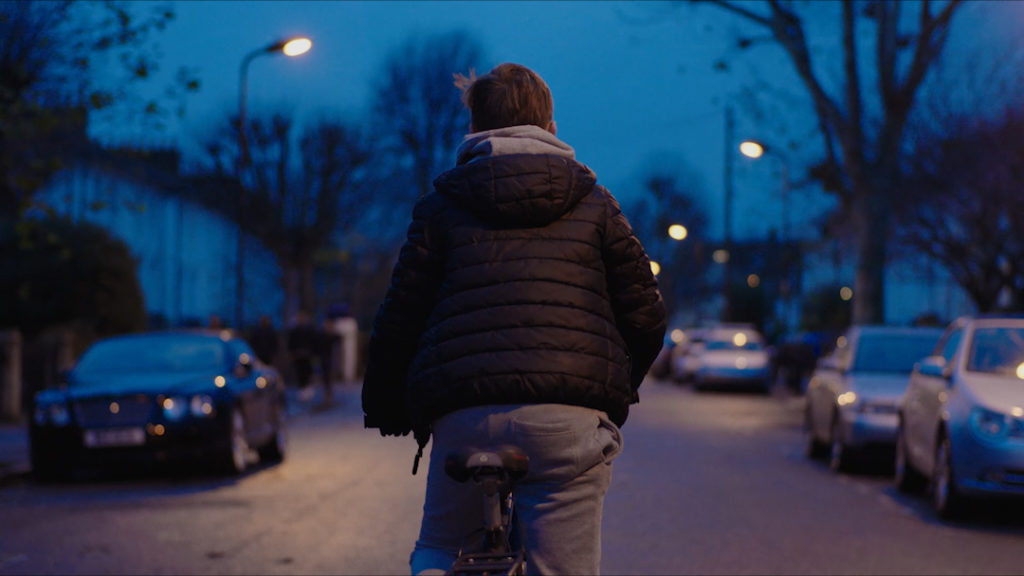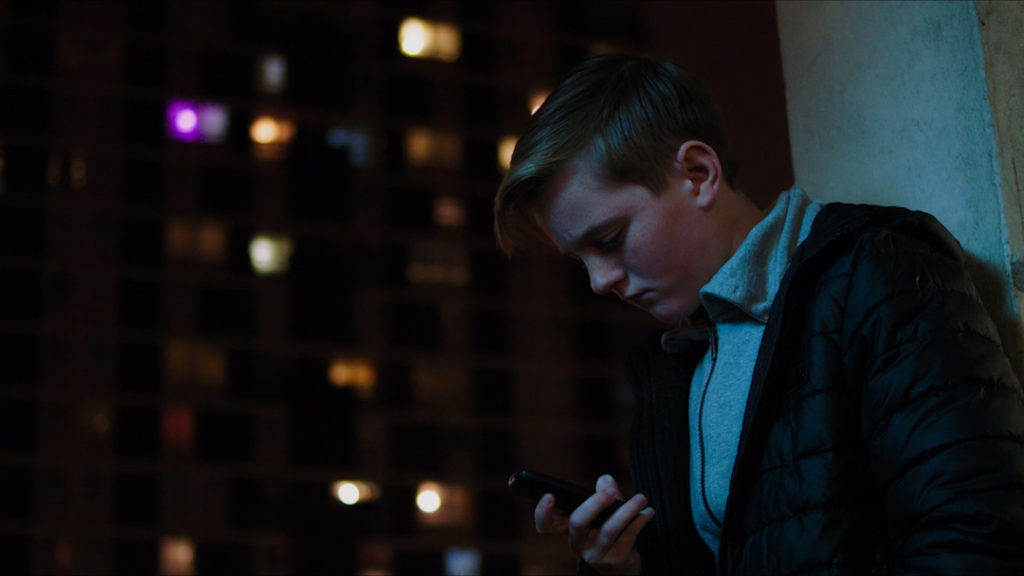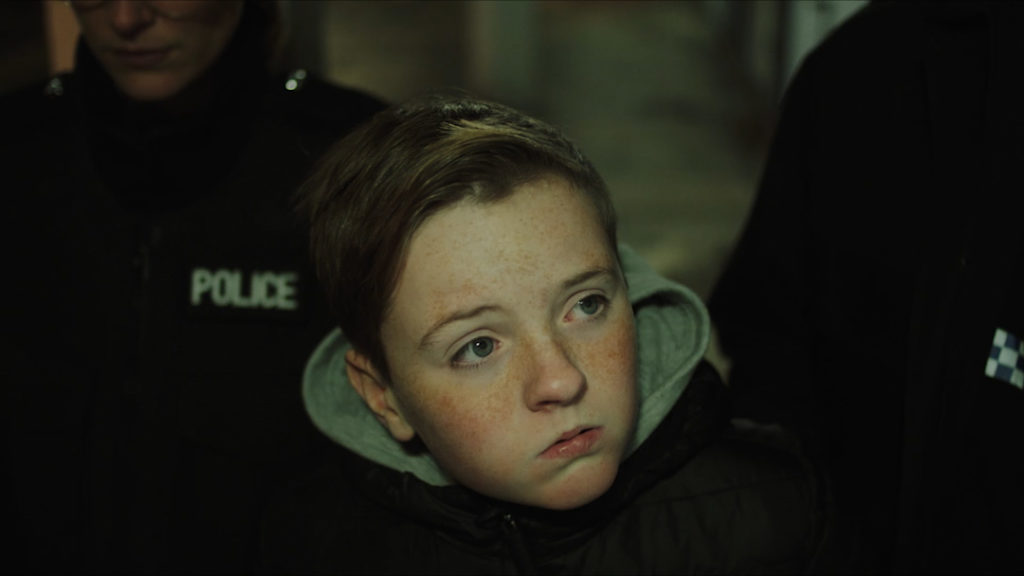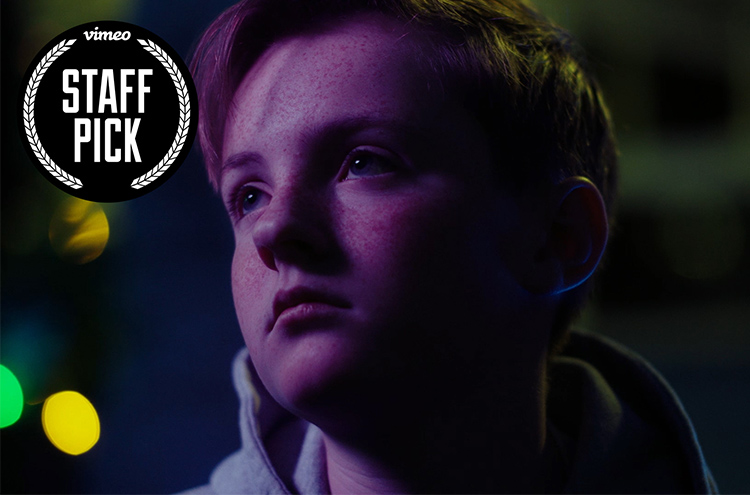
We are thrilled to announce that our short film we produced with director Charlotte Regan has been awarded a Vimeo Staff Pick! Drug Runner is an excellent example of Charlotte’s style and visual prose. Featuring a 15-year-old drug dealer, this short is carefully written, beautifully shot, and expertly cast–the perfect combination for a piece that tests the line between documentary and fiction.
Charlotte was raised in Hackney, where she lived with her mother and grandmother. She started her career incredibly young at 14, where she began filming grime music videos. She made an astonishing two-hundred-plus of these before moving on to make her first short film. Charlotte has won numerous awards for her work, including the BFI Future Film Award, the BFI New Talent Award, a Cannes Lions YDA Award, and now her second Vimeo Staff Pick for Drug Runner.
Everything that we do at Bold Content, whether it’s a talking head, or an event video, or a promo for a business, we bring back to documentary. Drug Runner is the result of this value combined with one of our other primary corporate values–helping young filmmakers to succeed in a commercially-saturated industry.
Read on to hear about Charlotte’s experience with Drug Runner and how she crafted such a stunning piece.
Conception and Development
Our first question was, of course, where did the idea come from?
Charlotte: Drug Runner was something that came kinda naturally over time, I suppose. The person it’s based on is a friend, and I always felt like it was a story that was never told. I wanted to explore the reasons behind people getting involved in things like drug dealing without making the character a villain, because he was just a normal, everyday kid. I love watching documentaries, but wanted to do something that merged doc and fiction, probably because I was, like everyone else, obsessed with The Imposter, and I’ve seen Bart Layton’s new film American Animals at Sundance.
So, the testimony was from a real person–that’s amazing. A sad circumstance, but amazing that this is based on a true story. How did you evolve this real-life experience to a script?
Charlotte: I interviewed him about 3 times, and those interviews were more like general chats that went on for about an hour or two each time. Just recording them on my phone. He knew the intention was never to use his voice, so he was happy to talk openly. From there, I had to make a decision on what sections to use, so whilst it is a ‘documentary’, it’s of course like all things, heavily edited.
Did you send these recordings to anyone else?
Charlotte: I didn’t let my voice-over actor, Alfie Stewart, listen to them. I never wanted him to try and completely re-create the guy’s speech pattern and style. Alfie is such an incredible and intuitive actor, and I wanted him to have his own take on how it should be said.
That does blur the lines between documentary and fiction, don’t get me wrong. I’m not putting this piece out there saying it’s 100% literal. We are close enough friends for him to be honest, but stories, even in our own minds, grow and change over time. The intention with the shooting style was to show his world as he experienced it. Visually, some elements are exaggerated, but no doubt he was exaggerating things in the interview. I think that’s the thing with docs, they’re always influenced in some way, but then again, they have to be.
Your child actor that you mentioned, Mitchell, was great. You’ve worked with him before but where did you find him and how did you know he could act?
Charlotte: We cast him in a short, ‘Dodgy Dave’, with ET Casting. He came in and just instantly had a great way about him, he wasn’t trying too hard to act. He was just naturally reading lines and running through scenarios. He is also great at trying things another way, he’s always interested in learning more, so he really tries to take any feedback onboard.
So how did Mitchell and Alfie take the testimony and keep it authentic, but also add their own voice? Because it’s really Alfie’s accent, accurately representing the location, that adds so much authenticity.
Charlotte: Alfie and the visual actor, Mitchell Brown, were both sent the transcribed script/interview before filming. They are both incredibly natural actors who put their own spin on things. They know how to be subtle, yet impactful, and they never overdo it. Mitchell in particular; I think it’s rare to find that in such a young actor, but he has those natural instincts. Often his first take will be better than any take where I have given him direction!
You have a definite theme and style throughout your films: snapshots of life that people may not usually think about–something either before or after what most would consider the story worth telling. Out of all the music promos you made prior to your first short, was there one that stood out to you as being your first ‘big break’, or that particularly influenced the style of work that you do now?
Charlotte: No, not really. They were all a big influence on the current work. Doing a lot of stuff always helps, as you learn about the different roles, the process–everything.
Production
Moving on to talking about production–what camera did you shoot on, and why?
Charlotte: We used an ARRI Alexa Mini and a Blackmagic. I think it was just convenient in terms of size, me and the Director of Photography, Arran Green, like how the picture looks once it’s been graded. No big reasons to be honest! I am not that techy, and will happily shoot with whatever camera the DOP would prefer.
You must have used a steadicam for some of these shots–if so, how did you manage to do it on such a small budget?
Charlotte: It was something me and Arran always knew we needed, so from when we first started planning it, we got in touch with a great steadicam operator who Arran had worked with before: Charlie Rizek.
There are some beautiful cutaway shots around the estate. Did you have a second unit do those, or did you direct every last shot?
Charlotte: No second unit. Me and Arran and the camera team shot those a day before filming the main stuff, with a small crew, and as little kit as we could afford to have.
Lighting was everything in your film. The colour, the depth, the emotion–lighting was your motif throughout Drug Runner. This shot in particular stood out to us:
What was your process planning the lighting? What kit did you use? Or was it all done in the colour grade?
Charlotte: The intention was always to make it a very colourful piece, especially initially when he’s falling into that world and loving it all. The guy it was based on always spoke about his housing estate as if it was a big community, and that’s something I wanted to replicate. I think it’s something lots of people who come from and grow up in those backgrounds feel. We always see a lifeless, gray council estate on TV, when the truth is, if you have lived in one from a young age, they’re filled with fun and your mates and people you know. They’re vibrant, and now that I live somewhere different I massively miss it. Its something me and him have always agreed on. Staying true to how he felt about places and people was always important.
To answer your question, the imagery was brought out in the colour grade, for sure, but it was shot how we wanted it to look, so we lit the sets with a lot of intentional colour.
Drug Runner in Post
You did your own editing, which was really powerful in conveying what it felt like to live The Kid’s life. What was your process? Did you have a clear vision beforehand, or did you play with different techniques before you found what you liked?
Charlotte: Usually I would say no, that the edit completely changed it. But with this, because of the very literal style of the script, it was edited almost exactly as it was storyboarded. We are being guided by his words, and due to the documentary/fiction blend I was going for, the edit was like a visual essay. I wanted it to start off quite matter-of-fact, giving people clear insight into his position. After that it was just about knowing when to let things breathe and when to cut quickly, which just comes with many re-edits, and a great team giving you honest feedback.
Editing something you have shot is so difficult–how do you keep a fresh perspective when you have seen the film go from storyboards, through to filming and onto multiple rounds of edits?
Charlotte: Who knows! I’ve yet to discover this secret. Something I do is watch it with other people when they’re watching the edit. There is something about hearing how an audience (even if it’s just your mate or nan) responds to something. And you have to be honest and harsh with yourself. If more than one person has a note – no matter how much you love the bit they’re talking about, you have to cut it or change it, as obviously it’s nagging at multiple people. I think you just have to not be precious about things.
Sound Design plays a big part in the film, too. There were so many small things that added to the ambiance–the flapping of pigeon wings in the estate, the bicycle on pavement, a subtle soundtrack. When you’re working with a sound designer, how do you know when a sound effect is too prominent? You don’t want to pull the viewer out of the narrative, but at the same time you want the sound to enhance the viewer experience? Can you give any tips about how to achieve that fine balance?
Charlotte: My sound designer Michael Ling is amazing. We have worked on every single narrative project together, so we fully understand each other’s style, and it’s easy to understand what the other is trying to achieve. We chat a lot about different film references, so that’s helpful in terms of communicating a specific sound. Michael is very much into understanding the story and only doing things that add to the narrative. So sound design isn’t necessarily something I have done at all. As with every element of a film, its about finding a great team. If you’re all on the same page, they’ll do a better job at their role than I ever could.
When you went into the colour grade what sort of things were you trying to achieve? Did you want it to just look nice or was there more going on?
Charlotte: We wanted to bring out the colour palette we’d already lit for, change little elements here and there and make it all feel like one collective piece. Filming B Cam meant there was a job matching it all up, which the colourist, John Layton, did brilliantly.
Was there anything in your original concept that you didn’t achieve that you feel could have made it a better film? Was anything left out in the edit because the shots didn’t work?
Charlotte: There were one or two bits that I wish we had achieved in a different way during filming, for sure. There always is. But I think that is why shooting as much as you can is so important; it helps you know what to try and avoid going into the next project.
‘Drug Runner’ is such a well-written, concise short film. Would you ever consider expanding it into a feature? If so, how do you think that would change the film?
Charlotte: I don’t think so. I think some things play well with short content, but might not hold for a longer length of time. If it were a different story, or a different world, maybe that could work; who knows!
Did you need to do any pickups for either the voice actor or the visuals? If so why?
Charlotte: Nope no pick ups luckily, I doubt we could afford them if we needed them.
What’s Next?
You’re planning a series of films about real people telling stories in their own words but with creative cutaways. Is this a means of evolving the genre of documentary?
Charlotte: No plan to evolve any genres! I just like to tell stories that are exciting me and that I feel motivated to tell. This style is interesting to me and the people I work with, as we love the approach of fiction filmmaking, but we love the truth of documentary stories, so it’s a nice way to merge those two things.
That concept just won a British Design & Art Direction pencil, but can you tell us any more about the series?
Charlotte: I haven’t fully thought it through myself yet, to be honest! [She laughs.] So there isn’t lots to tell, otherwise I for sure would!
Did you have any problems that you overcame? Can you give any advice which might help other filmmakers in their quest to make awesome films?
Charlotte: It’s a weird topic for most people, a 15-year-old cocaine dealer is hardly something that everyone would be jumping to see. For a while, I kept putting this idea off, thinking no one would want to see it. It’s a struggle we all have, I’m sure, just in trusting our own voices and ideas. But everyone is helped by finding people you trust and want to work with, who will actually give you honest opinions. It’s a collaborative process, always.

